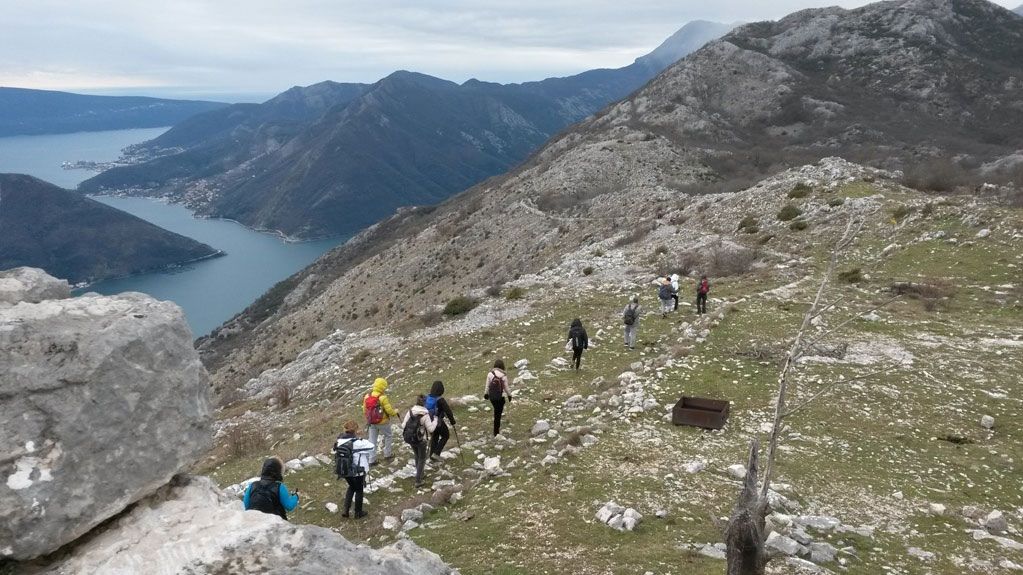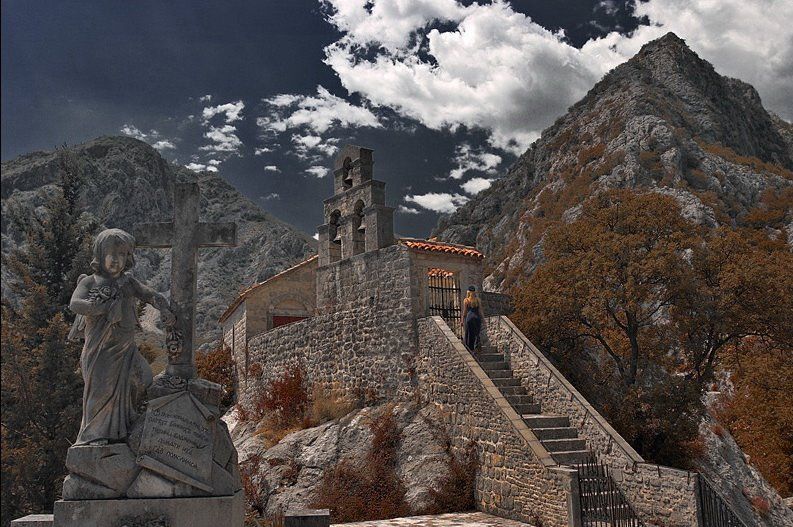February 25, 2019 - Orahovac is a place in Kotor Bay, which stretches from the village of Ljuta to Perast. The name of the site is first mentioned in the 15th century. Like most settlements along the Bokelian coast, and Orahovac exists as Gornji (upper) and Donji (lower) - the first was formed the settlement in the hinterland, and later the urban area along the coast. Today, it is just the coastal part of Orahovac - the center of the settlement and the village Drazin Vrt, what we read in the area, while most of the upper settlement is left behind preserving only the outlines of the former cultural landscape. Our host in Orahovac is Professor Dr. Ilija Lalosevic, an architect.
"At the time of Old Zeta, Orahovac was the principal and included Donji Orahovac, Drazin Vrt and Glogovac, if we are talking about the seafront. Orahovac once belonged to the Perast municipality, and we know that Glogovac was part of it, by notary records from the Venetian period. As far as Gornji Orahovac is concerned, we have a whole range of hamlets - the Velje Selo, the largest, then the Kljavici, Jezevici, Ubalac and Velinici. What we see today along the shore is therefore only a small part of the settlement territory, which inland goes all the way to Krivosije, and in one part even borders with the Municipality of Niksic and the Municipality of Cetinje - the villages of Grahovo, Zalazi and Cuce. Of course, the older settlement is Gornji Orahovac. Along the coast, as well as in other parts of the Boka Bay, such as the Stoliv or Prcanj, at first were just objects related to sea activities, while the majority of the villages were in the background," explains Professor Lalosevic.
 Copyright: www.dan.co.me
Copyright: www.dan.co.me
From 1482 to 1684 Orahovac was under the rule of the Ottoman Empire. It was freed along with Risan and other places under Turkish rule, up to Kumbor. "At that time, the inhabitants began to be more involved in maritime and commerce, which meant the spread of settlements along the coast. Although Orahovac in the past was primarily perceived as a settlement of farmers and fishers, it was significant in the maritime sector and especially in the trade. Because of the connection to the hinterland, this place was the door of Montenegro to the sea - the area of Cuce gravitated to Orahovac. Therefore, after liberation from the Turks in the 17th century, beside Kotor and Risan, the one in Orahovac was the third market in Kotor Bay. For this purpose, the whole network of paths has been made, as evidenced by the documents available in the Historical Archive in Kotor," explains architect Ilija Lalosevic.
Orahovac is today one of the few places along the coast of the Boka Bay where you can still feel the authentic culture of life. The reason for this, above all, lies in the fact that the cultural landscape along the coast is still quite well preserved of the pressures of excessive and inadequate urbanization. "In comparison with other places in Boka, we can say that Orahovac is well preserved, especially part along the coast with old, stone houses. After the earthquake in 1979, some buildings were built that are not very close to the ambience, but the town mostly preserved the character and urban matrix, characterized by smaller buildings and a lot of greenery. The relationship with the coast, the sea, the Mandraci has been preserved, we have kept the beaches. We have a tourist resort that we did not want, against which the locals even managed to compete at the session of Kotor Municipality in the 1990s, but it was subsequently built. It is the Synthesis Complex, which, as we would say, is seen from the plane. We have several dense urban angulations that are not in the character of the matrix, but it is still negligible when we look at what has happened in the area of Dobrota, Kostanjica or Prčanj."
Gornji Orahovac is almost completely abandoned today. "According to some data, Orahovac had almost 1,000 inhabitants in its "golden age", in the middle of the 19th century. The village was very populated; each household had about ten members, especially in the largest hamlet of Velje Selo, which had thirty houses. Gornji Orahovac became abandoned after the Second World War when emigration took place. Today there are no permanent residents, and part of the houses is preserved only in Ubalac settlement, to which, thanks to the efforts of the locals who are still returning to the hinterland, especially the teacher Mr. Abramovich, a road was made. This route comes from the hinterland of Risan, from the locality of Kalacka Voda. To other villages of Gornji Orahovac, there are no roads, and they are abandoned completely thirty years ago," says Professor Ilija Lalosevic.
Today, Gornji Orahovac is known primarily as a popular destination for alternative tourism, hiking, and mountain-climbing, which brings us to the sad fact that this part of Boka Bay has met more tourists than residents. "There are plenty of domestic and foreign guests, as well as my colleagues, who visit Gornji Orahovac, primarily within walking and hiking trails. I was there last time in 2005 when we prepared the exhibition "Orahovac - a village on our conscience" realized by Jadran Art from Perast and the former Regional Institute for the Protection of Cultural Monuments. Except for the needs of this exhibition, some ethnologists from the University of Belgrade were also involved in the research. While we were engaged in the Regional Institute, colleague Aleksandra Kapetanovic and I started work on collecting materials - shooting old houses, after which the rural architecture of Gornji Orahovac was not deeper studied," Lalosevic explained.
In anticipation of some better times for the legacy in the hinterland, and Orahovac, as well as other places along the coast, today mostly lives from tourism. However, the site has managed to preserve a part of earlier economic activities. "We in Orahovac still have fishers who are engaged in fishing in the old, traditional way. Agriculture, because of the terrain configuration, has never been specially developed but we're cattle breeding. Unfortunately, this activity is dead. As far as tourism is concerned, Orahovac is not a place that characterizes masses. The capacity is primarily directed towards family tourism, which is why Orahovac attracts guests seeking peace and rest and the true meaning of that word. Along the coast, we have several wonderful beach bars, which are embedded in the ambience and are characterized by a lot of greenery. I think peace and harmony are what attracts tourists to Orahovac. Earlier, most of our guests come from Belgrade and Novi Sad, and now most of our guests come from Western Europe, Germany, and France," says our host in Orahovac, architect Ilija Lalosevic.
 The church of St. George on the rock Stanac, Copyright: Portal Beogradska Nedelja
The church of St. George on the rock Stanac, Copyright: Portal Beogradska Nedelja
When it comes to the cultural heritage, the most important monument of Orahovac is the church of St. George. Its architecture is not impressive, but its position. It is located on the great natural rock of Stanac. The chapel on the site of today's church altar dates from the 13th century, while the rest of today’s church was erected in the 19th century.
Today, in Orahovac you can visit the Bajova kula tower, a place where the famous Montenegrin warrior Bajo Pivljanin once operated. You can opt for one of the hiking trips in the hinterland, or enjoy the pleasant seafront ambiance, with friendly hosts and hard working fishers who continue to sail on the wooden boats, using the fishing tools of their grandparents.








